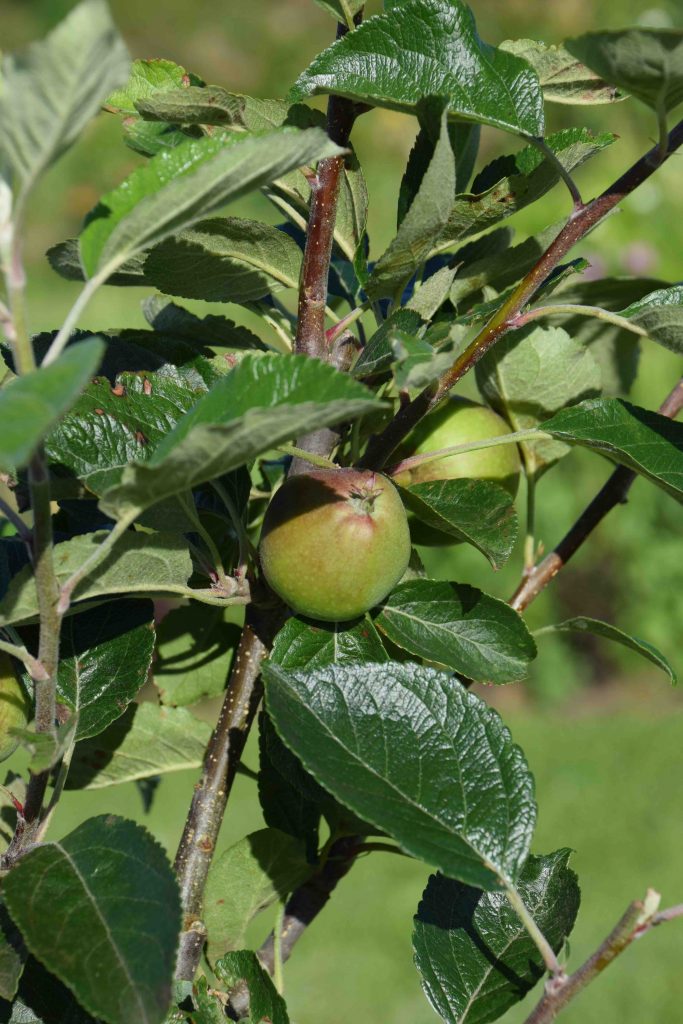
When I worked at Nags Hall in the 80s, at this time of year, if the weather was good, I would sit on the sun-warmed peat bales (thank you Bord na Mona) to have my lunch. My sandwiches were augmented by mulberries from the tree that stood at the back of the car park or the apples that grew in a long line up to the area planted with conifers – now the car park. I am not sure why Brian planted a row of ‘George Cave’ but, all these years later, I have planted one (above) in my own garden. It is one of the earliest of eating apples, ready to eat in August and, like all early apples, does not store well and does not have a complex flavour. In fact, it is often criticised for being rather acid but it is crisp and I loved them. I have not eaten one for 40 years and am looking forward to tasting one again as this is the first year I have allowed my 3-year-old tree to crop. It is a heavy cropping apple, the only problem being that the fruit all have to be eaten within a few weeks. If you like making apple juice you can sort that problem.
It is an Essex apple, raised in 1923.
It is not quite time for summer pruning of apples – that is best done in mid August. But it is worth mentioning in advance. Summer pruning is better for trees than hacking off branches in winter which encourages vigorous growth and no fruit. Summer pruning, usually pruning back to four leaves of the new growth, slows the growth of the tree and encourages fruiting. In the photo above you can make out the stem that was pruned in August 2019 – you can just see the pruning cut, above the apple. This spring this shoots produced two long shoots at the top, and a couple of fruiting spurs – you can see one clearly on the left that will bloom next spring, and obviously there are apples. Next month I will cut back the long shoots that have grown this summer, back to 4 leaves. This makes the tree dense and bushy.
Note
Because the growth that is pruned is that produced this summer it does not involve removing any fruit – something that is often said against summer pruning.
Antirrhinums
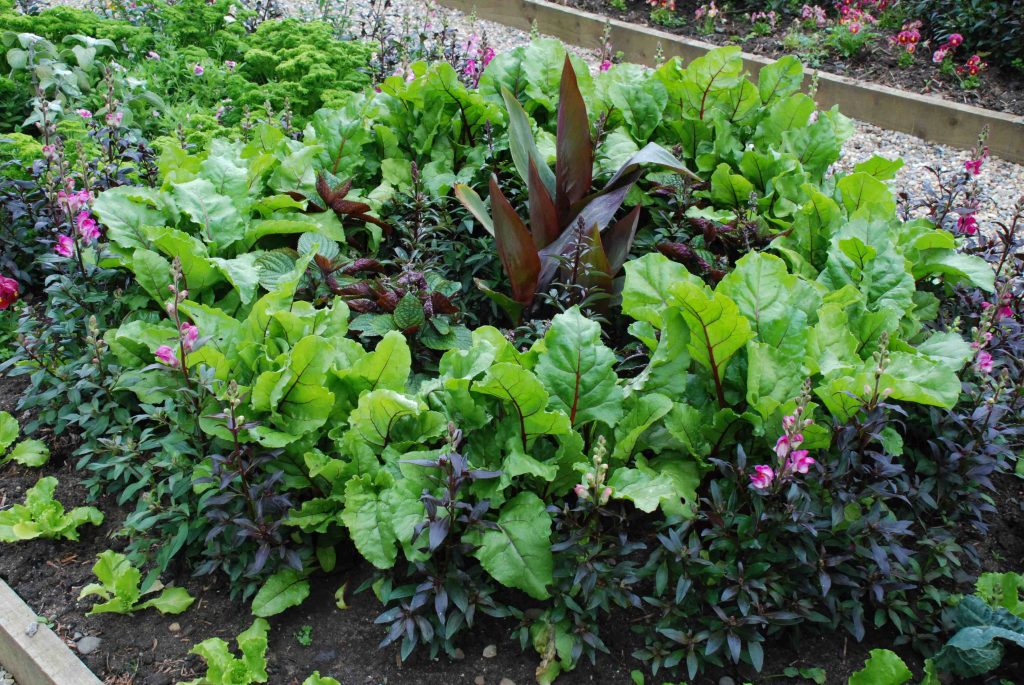
One of the plants I grow every year is snap dragons (antirrhinums). They are rather old-fashioned and are rarely seen for sale as plants though a few years ago ‘new’ trailing types were popular. Their failing, if it is one, is that they flower rather late from seed and they flower in flushes rather than continually. I like tall antirrhinums. The very dwarf kinds, supposedly perfect for bedding, do not flower for long because they do not have enough basal shoots to grow after the main flush of bloom. Taller kinds branch from the base and flower all summer, especially if the flowers are picked regularly, which effectively deadheads them.
Raised from seed, they have to be sown early or they will not bloom till August. At Nags Hall they were the first seeds we sowed and they were always drenched in fungicides to prevent damping off, the worst problem with growing them. They are the hardiest of bedding plants though so they were moved out into the frames before the danger of frost has past to make room for later batches of plants.
Years ago I grew a mixture (above) and some of these had dark purple leaves. The flowers ranges from pink to yellow but I preferred the pinks so I have collected seeds every year from my favourite plants and now I have a ‘strain’ that has dark leaves and pale to mid pink flowers (below). It grows about 40cm high. What I like about them is that they have the traditional flower shape, just right for big bumblebees to force their way into.
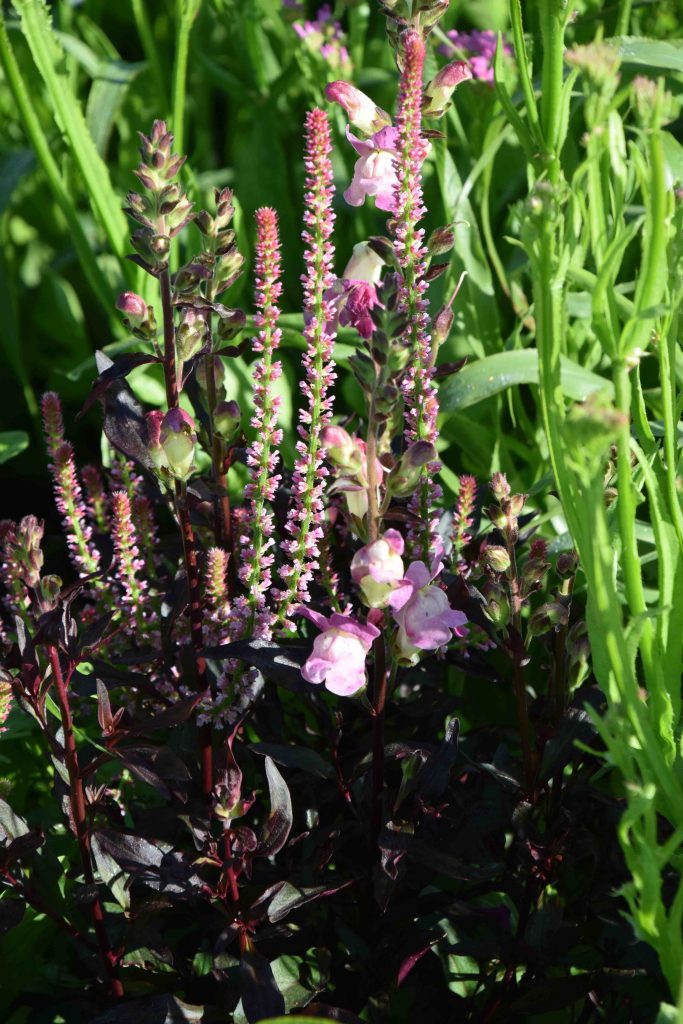
Breeders have made great strides in redefining antirrhinums and I do waver from my usual choices now and then. This year I have grown ‘Pink Trumpets’ with its ‘open’ blooms. It is tall and colourful but it has sated my desire for the curious and it is hardly an improvement.
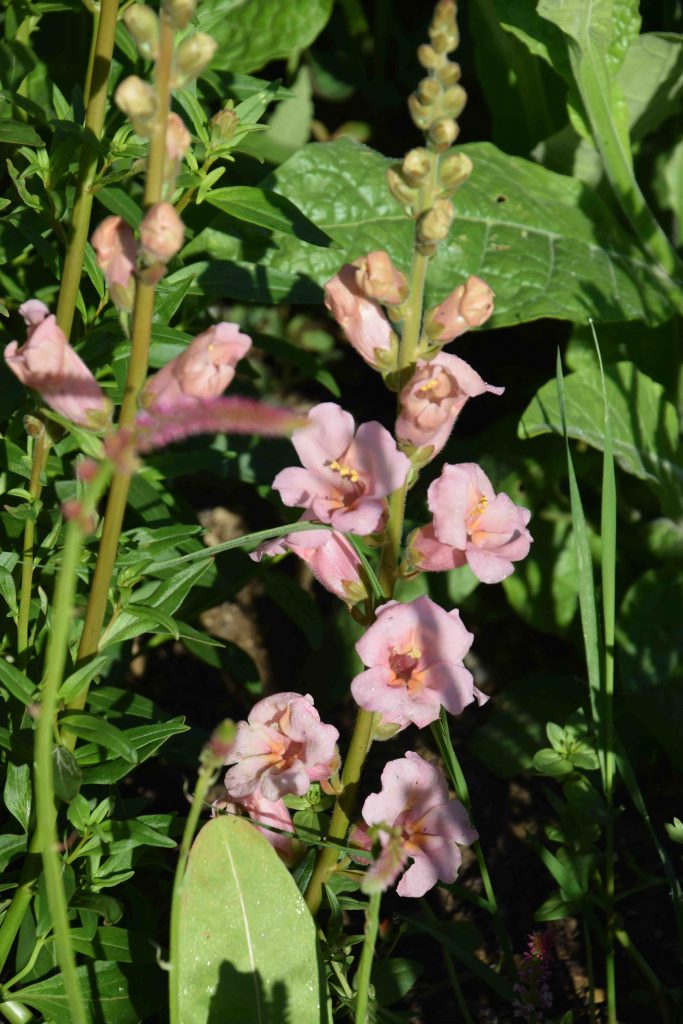
I still prefer the traditional flower shape.
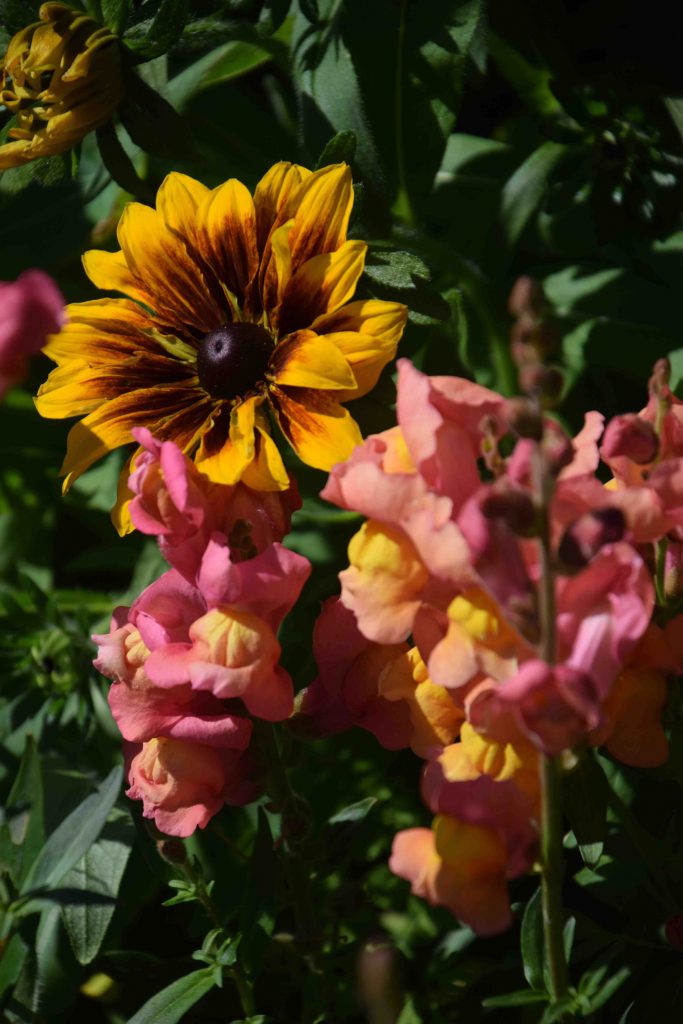
Jobs for the week
A question I get asked a lot is ‘what should I do with my poinsettia?’
I sometimes think that the owner doesn’t really care what happens to it but just wants to show off that they have kept their plant, while I threw my plant onto the compost heap in mid January.
Keeping a poinsettia is a labour of love and a real faff to get to ‘bloom’ again and I won’t go into that bit at the moment since it is a long way off. But if you are one of those able gardeners who have a big, leafy poinsettia, this is what to do.
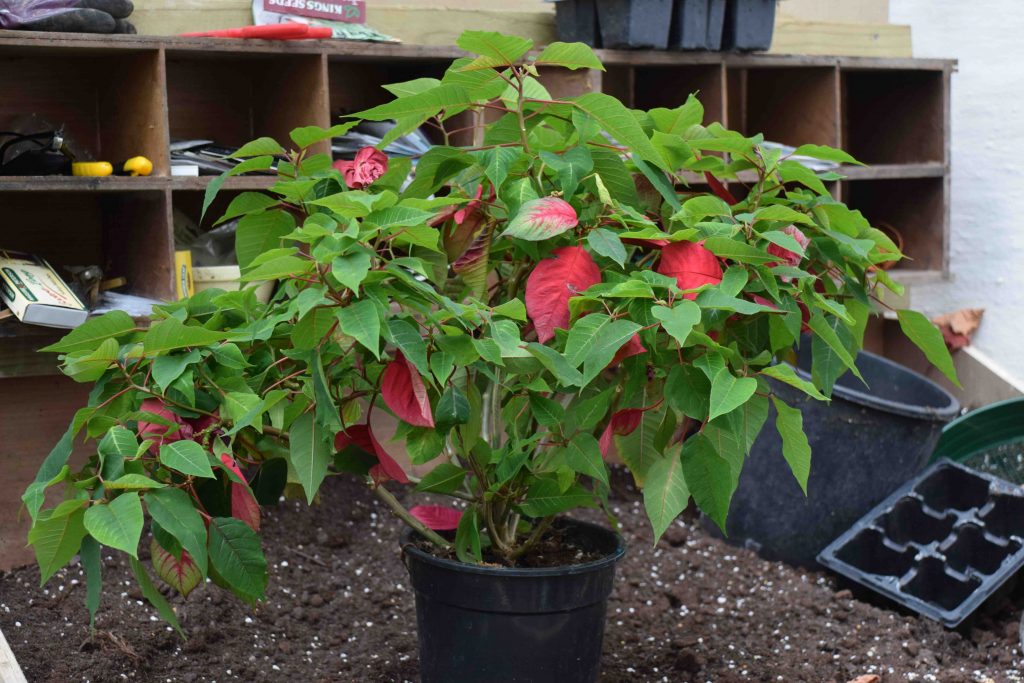
Your plant probably has a few bracts and has made new shoots. To keep it, you need to prune it back, repot into a slightly bigger pot and then water and feed it so you have lots of strong, new growth ready for autumn when you need to think about those bracts.
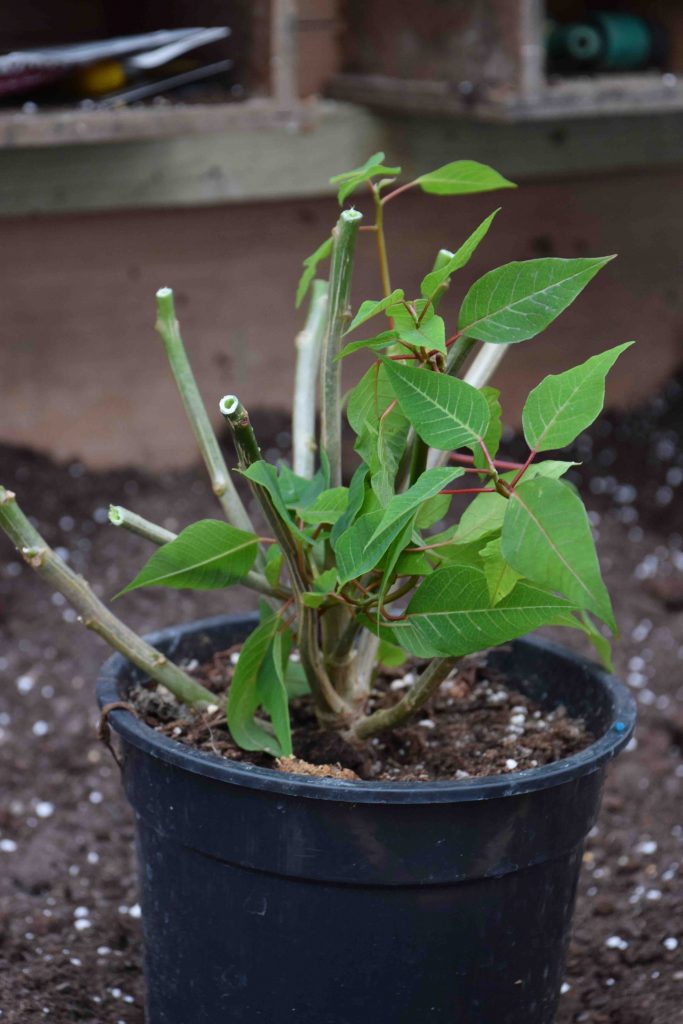
In case you are wondering how I have this plant to photograph, it was from a few years ago when I did manage to keep one longer. Be careful of the sap which is irritant until it dries.